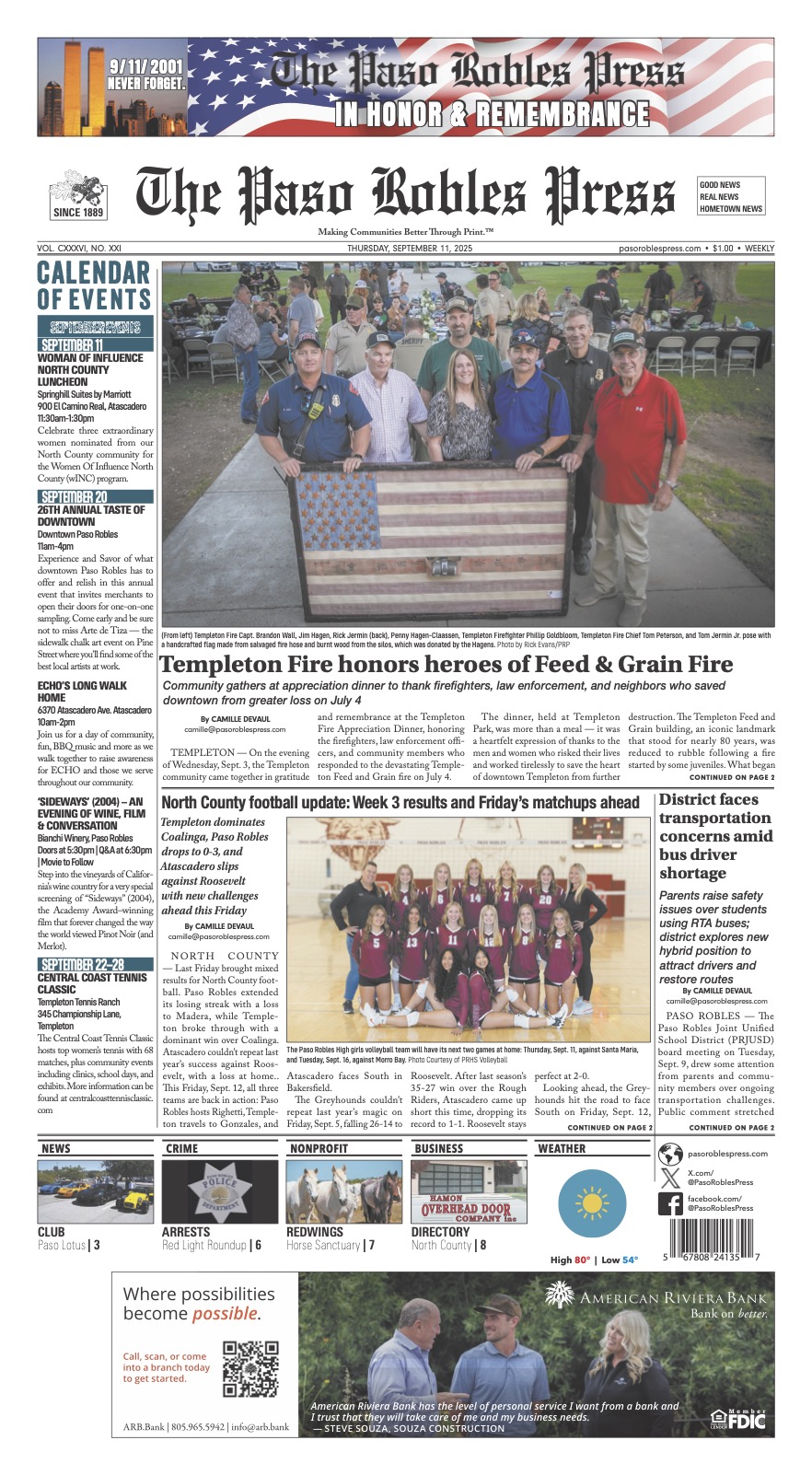The Estella Adobe Church that stands on Airport Road just north of the airport was built circa 1878 by pioneers of the Estrella Plains as the first Protestant church in northern San Luis Obispo County. It prospered for a few years but by 1886 was no longer used and fell into disrepair, disintegrating over the years.
The church was restored by the Historical Committee of the Paso Robles Women’s Club and rededicated in 1952. The restoration was done by French-Swiss adobe expert Jess Crettol, who moved his family from Wasco to San Miguel in 1934 to restore Mission San Miguel. Orphaned at 12, he left home and traveled through Europe before coming to America in the early 1900s. While in Spain, he learned to make and build with adobe.
To help rebuild the Estrella church, young men from the California Youth Authority facility (popularly called the “Boys’ School”), just a couple miles south of the church, were recruited. The adobe bricks were made in a corner of the school property and trundled to the church by the crews on foot.
Crew Supervisor James White from San Miguel hand-wrote an account of the experience. Here are excerpts from his account:
“We then cleaned the debris from inside and next to the outside. This was placed in several piles and used to make mortar for binding the bricks. This mortar was from the original fallen and disentergated (sic) bricks. Mr. Crettol then selected two or three boys to be his bricklaying apprentices. The rest of us made mortar, hauled bricks to the layers and generally did the roustabout duties. When the window frames were placed the bricks were snugly and closely to the frames. When the mortar dried, long strong nails were pounded through the frame into the dried mortar. The door was similarly done and both had railroad ties over the top of each. When proper height was reached the 9-inch bricks were split lengthwise, then laid to the edge of the 12-inch bricks. Then strands of barbed wire were twisted together, attached either end to railroad ties that were used to provide a basis for the rafters. The barbed wire was covered with mortar. Any heavy wire or metal rods would have sufficed, but the barbed wire was discarded and handy. We also put a cement skirt around the base of the church to prevent water from doing damage, also the roof eaves are pretty far out. I think I remember that the walls were set on a foundation of rocks the size of baseballs and cemented with mud mortar similar to some of the San Miguel Mission.” He concluded with, “This is all I can recall at this time, 50 years ago seems long but seems to my mind that it was only a few years ago. The boys and I know what we contributed to the restoration will last long after we have passed away.”
San Miguel story ideas? Contact Lynne Schmitz at lynne@pasomagazine.com











